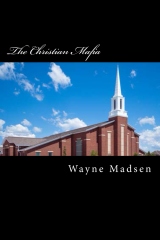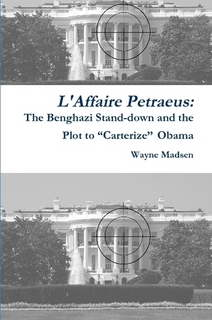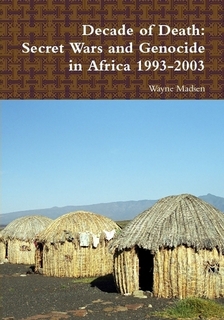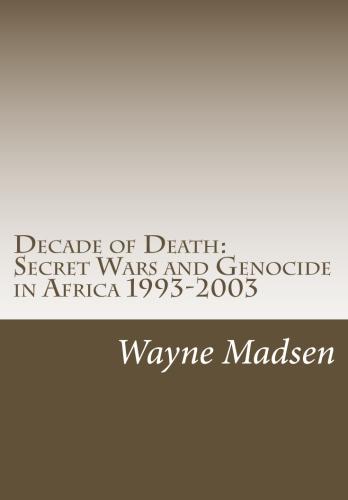June 12-14, 2015 -- SPECIAL REPORT. UPDATE. Jeb Bush received comprehensive CIA briefing when he worked for bank in Caracas
WMR has obtained a copy of a letter sent to the Central Intelligence Agency by Jeb Bush when he served as the top official of Texas Commerce Bank in Caracas, Venezuela. On April 8, 2015, WMR first reported on the possibility that Bush, a recent college graduate, may have served as a CIA "non-official cover" (NOC) agent in Venezuela. The revelation about Bush's past links to the CIA comes two days before his expected announcement in Miami that he is a candidate for the 2016 Republican presidential nomination.
A June 7, 1977 letter on Texas Commerce Bank stationery from "Jeb Bush" of the bank's International Banking Division, using post office box 2558 in Houston, to Robert W. Gambino, director of security for the CIA thanks Gambino, who was in charge of issuing clearances for CIA official cover and NOC agents alike, for "arranging such a comprehensive and informative briefing" for Bush during his recent trip to Washington.
Bush also wrote, "I now understand why my father says that your agency has the most dedicated and professional group of people with which he has ever been associated." Bush again thanked Gambino and his associates for seeing him.
Upon entering office on January 20, 1977, President Jimmy Carter refused a request from George H. W. Bush that he be retained as CIA director. Instead, Carter chose his Annapolis classmate, Admiral Stansfield Turner, to take the helm at Langley. Although Turner dismissed a number of Bush clandestine service loyalists, many remained in the CIA's infrastructure. Update: One of the Bush loyalists was Gambino, the CIA security director who arranged for Jeb Bush's comprehensive briefing. In 1980, Gambino retired from the CIA to work for George H. W. Bush's presidential campaign. The elder Bush rewarded Gambino in 1991 when he was appointed director of the Selective Service, which registers young men for a potential draft.

In April of this year, WMR reported: "One of the last things then-Central Intelligence Agency director George H. W. Bush did for his son Jeb, whose actual name is John Ellis Bush from which the 'Jeb' is derived as an acronym, is to have him hired by the international division of the Texas Commerce Bank as a CIA 'non-official cover officer or 'NOC.' Texas Commerce Bank was an optimal cover for CIA activities. The bank was founded by the family of James Baker. All the elder Bush had to do was to call his close friend Baker to have his son hired by the bank's international division, the usual branch where CIA NOCs were placed within banks and investment firms. Other banks used by the CIA for NOC embeds included Bank of America, Chase Manhattan Bank, and Manufacturers Hanover.
Texas Commerce Bank, bought by Chemical Bank in 1987 and which is now part of J.P Morgan Chase, had the right pedigree to enable it to work closely with the CIA. In 1977, its board members included Lady Bird Johnson and the recently-defeated President Gerald Ford. In the 1980s, Kenneth Lay, who founded the CIA-connected Enron, became a board member of Texas Commerce Bank. Howard Hughes's CIA-linked Summa Corporation used Texas Commerce Bank to purchase a number of properties on the Las Vegas strip." Hughes also held major accounts at the bank.
A vanity book marking Texas Commerce Bank's centenary in 1986 and commissioned by bank president Ben Love in 1981 describes the bank's cozy relationship with George W. Bush and his Zapata Off-Shore Company. Zapata was linked to the CIA's abortive Bay of Pigs invasion of Cuba in 1961. In 1985, Love also served on President Ronald Reagan's "President's Private Sector Survey on Cost Control," also known as the Grace Commission.
The book describes how the "major predecessor of Texas Commerce, Texas National Bank," played a "significant role in helping finance the early development of Zapata Off-Shore Company . . . which grew to national prominence beginning in the mid-1950s." The book also states, "George Bush, who later became vice-president of the United States, and J. Hugh Liedtke, subsequently the head of Pennzoil, formed Zapata Petroleum Corporation with headquarters in Houston in 1953, the same year Texas National Bank (TNB) was created through the merger of South Texas National and Union National Bank.
TNB quickly established mutually profitable working ties with Zapata Off-Shore Company, an 80 percent-owned subsidiary of Zapata Petroleum . . . Loans from Texas National to Zapata for drilling rigs and vessels to tend to the rigs established the growing company as one of the bank's most significant oil-related accounts in the late 1950s."
Three ships owned by Zapata and which were financed by TNB -- the Houston, Barbara J, and Zapata -- were loaned by George H. W. Bush's firm to the CIA for the 1961 invasion by exiled Cuban mercenaries of Cuba. Not coincidentally, the Bay of Pigs invasion was code-named OPERATION ZAPATA by the CIA.
Texas Commerce Bank officials often rubbed shoulders with Zapata officials at the swank Houston Club during Jeb Bush's two year stint in Caracas. It was not unusual to see Zapata's vice president for international operations H. Merle Myers at club events with John Whitmore, chairman of the board; Kenneth M. Williams, senior vice president; Henry F. LeMieux, director; Thomas Dean Hogan, vice president of the Trust Department, and John West, executive vice president of Texas Commerce Bank. Other oil executives who frequented the club were those from Halliburton, Pennzoil, Exxon, Texaco, Shell, Amerada Hess, Brown & Root, Gulf Oil, and Ashland Oil. In 1977, these and other Houston Club members would also welcome back to their fold longtime member George H. W. Bush who moved back to Houston following his year as CIA director.
Bush entered the University of Texas in 1971 after graduating from Andover in Massachusetts where his academic record was less than stellar. Bush was forced to redo the ninth grade at Andover. However, at the University of Texas, Bush majored in Latin American Studies and graduated in a phenomenal two-and-a half-years. An October 8, 1976 memo to the CIA's Deputy Director for Operations Training cites the University of Texas graduate program as a favored recruiting ground for the CIA. The CIA's Southwest Regional recruiter spoke to some 50 graduate students and faculty at the LBJ School of Public Affairs about careers in the CIA. However, as the memo notes, the recruiter warned a reporter for the University of Texas daily newspaper covering the talk that certain information "should be off the record." The reporter agreed to the CIA's terms. One of those present was Dr. Sydney Weintraub, a former deputy Secretary of State and deputy administrator for the U.S. Agency for International Development (USAID). The CIA recruiter also targeted graduate students and faculty at the University Center for Asian Studies and the center's director, Dr. P. Tomasson Jannuzi. George H. W. Bush was CIA director during the agency's full court press recruiting effort at the Austin campus.
In 1977, a short time after his father left the CIA as director, Jeb, fluent in Spanish as a result of his time as an exchange student in Guadalajara, was sent, along with his Mexican wife Columba, to Caracas, Venezuela to work as a 'branch manager' and 'vice president' at the young age of 24. But Jeb was no ordinary 'branch manager.' He was, officially, Texas Commerce Bank's top point man in the Venezuelan capital and, unofficially, the CIA's main financial liaison to the Venezuelan oil industry and the Colombian narcotics cartels.
Jeb Bush's dalliance with the covert world of CIA off-shore financing would introduce him to important future political benefactors and those who would help shape his brother George W. Bush's eight year presidency. Continuing our report from April 8, 2015:
"[James] Baker sold Texas Commerce Bank's Houston skyscraper to the head of the National Commercial Bank of Saudi Arabia, Sheikh Khalid bin Mahfouz, in 1985. Bin Mahfouz was later identified as a key member of Saudi Arabia's support network for the 9/11 terrorist attacks against the United States, which is noted in the still-classified 28 pages of U.S. Senate Intelligence Committee Report on 9/11 intelligence failures. Bin Mahfouz, who lived in the River Oaks section of Houston near George H. W. Bush, died suddenly in 2009 at the age of 59. Bin Mahfouz, who was also an Irish citizen, threatened with confiscatory lawsuits any publication that reported his links to 9/11 and his family ties to Osama bin Laden.
Jeb had no problems with the Venezuelan government in providing financial support for the Colombian cartels. For much of Jeb's stay in Venezuela, the extremely corrupt Carlos Andres Perez, known as 'CAP,' was president. His extravagant spending using Venezuela's revenue from the recently-nationalized oil industry earned his government the nickname of 'Saudi Venezuela.' Although CAP nationalized the oil industry and created the Petroleos de Venezuela (PdVSA) state-owned oil firm, he also was generous to American firms bidding for work with PdVSA. One of them was Bechtel Corporation, the firm of future Reagan-Bush cabinet members George P. Shultz and Caspar Weinberger. With a number of Bechtel employees in Venezuela, Jeb was not the only CIA 'NOC' present in the country. But, he was the most influential.
A CIA report about Venezuela's growing international ties in 1977 was prepared during Jeb Bush's assignment in Caracas. Titled "Venezuelan Internationalism: Oil and Influence," dated July 1977 and classified Confidential, the report warns against Venezuela's "unprecedented series of agreements with Central American, Caribbean, and Andean countries" and its vigorous "global dialogue between the developing and developed countries." The report also warned that Andres Perez expanded Venezuela's new foreign policy orientation from that of his predecessor Rafael Caldera and "identified himself personally with Third World aspirations." The CIA report indicated particular alarm by Langley over Andres Perez's November 1976 trip to the Soviet Union and another trip to the Middle East in April 1977. What particularly irritated the CIA was Perez's plan to ship Venezuela's oil to Cuba -- petroleum that was normally supplied by the Soviet Union -- in return for the Soviets supplying the oil normally destined for Cuba, to Western Europe, particularly Italy, thus reducing transportation costs for all parties concerned.
At the center of all the high-stakes oil politics in Caracas was Jeb Bush.
During CAP's second term as president from 1989 to 1993, a young army officer named Hugo Chavez attempted to overthrow the corrupt CAP in a coup. Many of Venezuela's elite who Jeb befriended during his days as Langley's main NOC in Caracas later became involved with repeated CIA attempts to overthrow Chavez and his successor, Nicolas Maduro. Today, they and their progeny live in the Miami-Dade area, particularly in Doral, nicknamed 'Doralzuela,' and are among Jeb's strongest and most deep-pocketed political supporters.
In 1989, CAP crushed popular protests against his government by killing as many as 3000 protesters. The massacre is known as the 'Caracazo' massacre. After leaving office the second time, Andres Perez was convicted of corruption and sentenced to 28 months in prison.
After leaving Venezuela in 1980 to help with his father's presidential and vice presidential campaigns, Jeb hooked up with Cuban-American Miami businessman Armando Codina, who had his own connections with CIA-supported anti-Castro Cuban exiles in south Florida. It was Codina who helped Jeb make millions of dollars in the real estate business and eventually help launch him on his political career that took him to the Governor's Mansion in Tallahassee. Jeb, as a principal of the Codina Group, was able to arrange the sale of high-priced condos and mansions in the Miami area to his elite friends in Venezuela, with Jeb receiving handsome sales commissions.
One of Jeb's close Miami associates was Cuban terrorist Orlando Bosch. Bosch was a key figure in the CIA's Operation Condor, which was an alliance of Latin American military dictatorships that targeted leftist leaders for assassination across international borders. From his base in Caracas, Bosch helped carry out the October 1976 bombing of Cubana Airlines flight 455, which was en route from Barbados to Jamaica. All 73 passengers and crew were killed in the attack, including children and the Cuban fencing team.
The Cubana bombing plot was discussed at a 1976 meeting in Washington between Bosch; another Cuban terrorist, Luis Posada Carriles; and Michael Townley of the CIA. Jeb's father, the CIA director, was fully aware of the plot, as well as another plot to kill former Chilean Foreign Minister Orlando Letelier. Letelier and Roni Moffitt, his American associate, were killed when their car exploded on Sheridan Circle in front of the Irish embassy in Washington on September 21, 1976, a few weeks before the Cubana airliner was blown out of the sky off Barbados.
Codina, Bosch, and Posada Carriles were all part of Jeb's inner circle of friends, which also included Cuban businessman Camilo Padreda, a former spy for Cuban dictator Fulgencio Batista, and Hernandez Cartaya, both later indicted for systematically embezzling funds from the Jefferson Savings and Loan of McAllen, Texas. Padreda and Cartaya were also identified as CIA agents who helped skim funds from Jefferson and other S&Ls to fund the Nicaraguan contras. Jeb's work for the CIA in Caracas in 1977 came a few months after the CIA's worst terrorism spree in history, which also happened to coincide with George H. W. Bush's single year of 1976 as CIA director.
After his father became Vice President, Jeb served as the liaison for the Nicaraguan contras and he arranged meetings between them and their supporters, as well as to the White House point man for covert assistance to the Nicaraguan rebels, one Marine Corps Lieutenant Colonel by the name of Oliver North. Another one of Jeb's Cuban cronies, Miguel Recarey, owner of Miami-based International Medical Center, an HMO, was awash in ill-gotten Medicare funds. Recarey and his brother, who had close ties to the CIA, were also funded by Florida Mafia boss Santo Trafficante, Jr., a co-conspirator in several CIA plots to assassinate Fidel Castro and a suspected co-plotter in the assassination of President John F. Kennedy.













